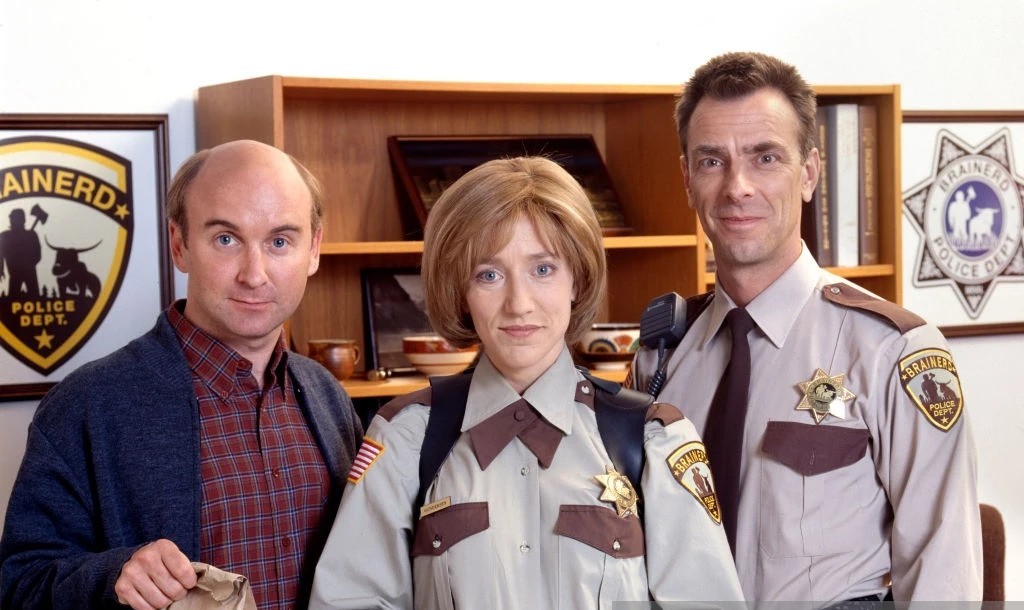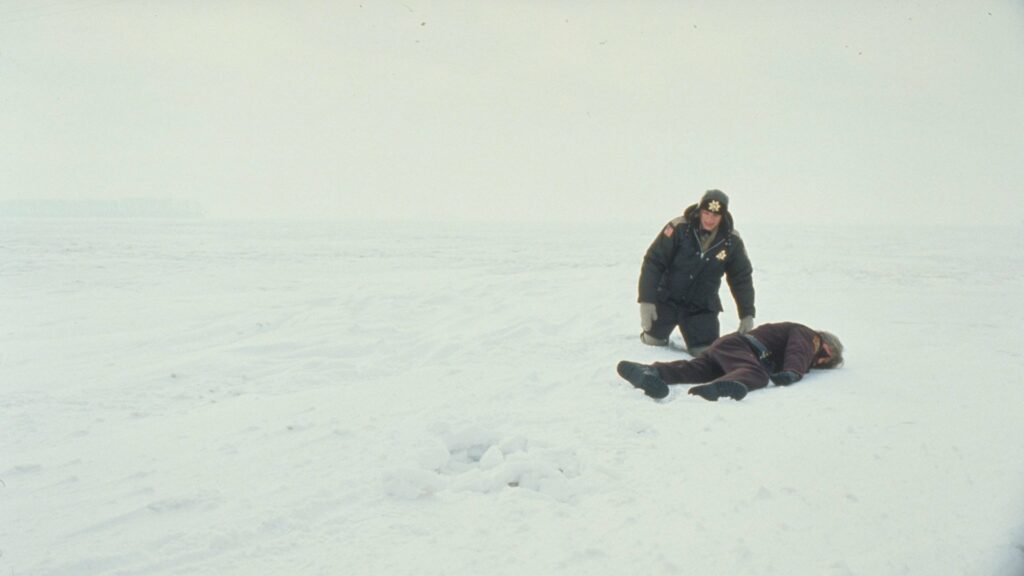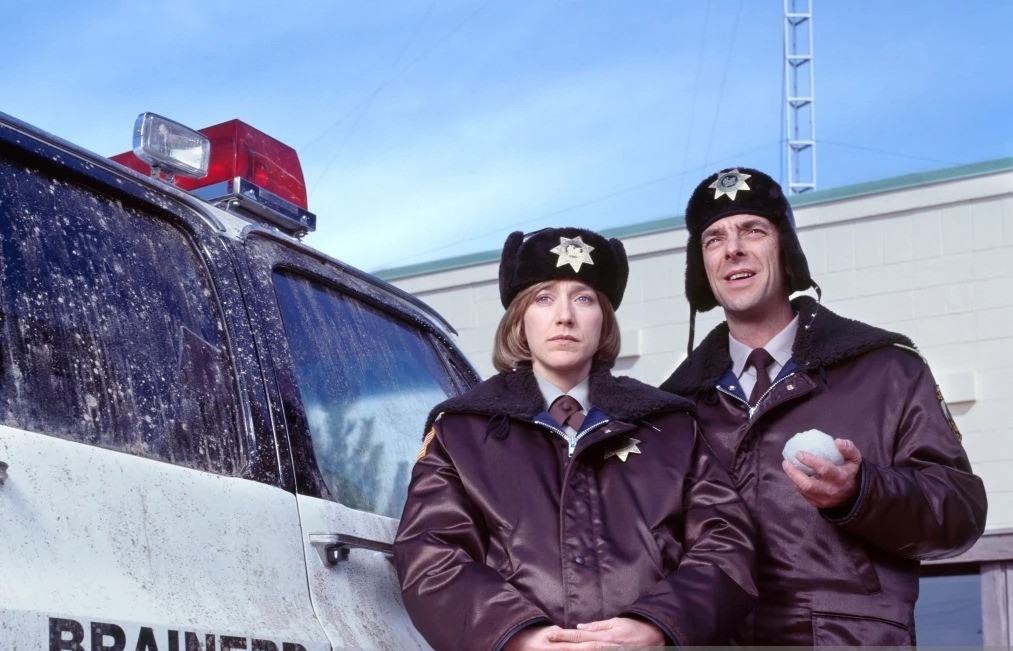I remember first learning of a Fargo TV series from an issue of Empire, soon before the first season began airing in 2014. What an awful idea for a show, I thought. Turning a great film into a case-of-the-week procedural detective series. A decade and five seasons later, I consider Noah Hawley’s Fargo to be one of my very favourite shows. My assumptions were all wrong. The series was an anthology show, thematically and tonally linked to the film more than narratively, and deeply understanding of what makes the works of the Coen Brothers so profound.
Then, only recently, a recommended video on YouTube shocked me: an unaired pilot of a Fargo TV series from 1997, uploaded in all its fuzzy 480p glory. You can watch it here. I had no idea such a thing existed. Watching it, all my greatest fears about the 2014 series were realised. This is the Fargo show I wrongly feared Hawley’s would be. This pilot, never picked up for a series, was a first attempt at a Fargo series, and an almighty failure.
Directed by Kathy Bates and written by Bruce Paltrow (Gwyneth’s dad) & Robert Palm, known for procedurals like Law and Order: SVU and NCIS, the pilot was filmed in 1997. That’s just one year after the film released, and a couple of months after it picked up two Academy Awards. The show sought to be ‘The Continuing Adventures of Marge Gunderson’, directly continuing on from the events of the film, but didn’t impress the executives and remained unaired until 2003 when it was broadcast for the first, and only, time.

From its first frame, the pilot presents itself differently than the film. There is no attempt at pretending the following events are a true story. Why? Because that would make it unconventional. A story presented as being true unfolds in a certain unexpected way, regardless of whether it is true or not. ‘Truth is stranger than fiction’, which is something Hawley’s incarnation pushes to the limit. The pilot doesn’t. It isn’t unconventional, unexpected, or strange. There are no idiosyncrasies or diversions, big or small, to make it feel ‘true’. It is a basic procedural show with a Fargo filter.
“The movie isn’t a detective story. It’s not a whodunit about a cop solving a mystery. It’s a crime story that focuses on all the players equally”. These words come from Noah Hawley’s original pitch document for his series and they capture the essence of Fargo perfectly. Conversely, the pilot is a detective story, pure and simple. A man is shot in the opening scene and Marge and Lou track down the killer by working out the type of bullet used. The killer is revealed to be a menopausal woman whose pharmacist wouldn’t give her oestrogen tablets so she killed him. I guess this is supposed to be some link or contrast with Marge’s situation, who is still heavily pregnant, but it falls flat.
For the pilot’s answer to the film’s Bill Macy, the killer is not interesting, nor is the show particularly interested in her. Like Bill, this should be a regular person who tries to solve a problem through crime only for it to chaotically get out of control before they ultimately pay the price. But it’s not. It’s just a case to solve, a killer to apprehend, and she barely feels like a character. This isn’t a crime show that focuses on all players equally. More time is spent with Marge thinking about the bullets used than on the criminal and the crime’s consequences.
Hawley’s pitch document continues: “Even brave, honest Marge would become jaded and hard if she spent too long working the kinds of cases that the movie explores. Marge might survive physically, but the qualities we love about her, her common sense, her unspoiled heart, would be lost.” This is a key argument against creating a case-of-the-week Fargo series, whether it’s about Marge or any other officer. Hawley’s show has to reinvent itself each instalment to maintain the key elements and tone. Despite the events of the film never being referenced, Marge already feels far too comfortable with everything happening in the pilot. The sequence at the crime scene plays out like it would in any other cop show, with Marge nonchalantly looking it over while her partner Lou talks about it maybe being a professional hit.

Hawley writes, “Fargo is the people we long to be (simple, kind, neighbourly) versus the people we fear the most (hardened, vicious, unfeeling).” It’s almost as if Hawley saw this original pilot before writing his pitch document to purposefully counter it. The characters in the 1997 pilot are all attempts at loveable quirky people, with darkness kept to a minimum and no outside forces of evil encroaching on the smalltown vibe. A few even struck me as similar to those who would eventually appear in Hawley’s show, although without any bite or nuance. A manicurist interested in female empowerment feels similar to Peggy Blumquist. A subplot in the pilot sees two brothers argue over their father’s burial, with one stealing the cadaver to give it a Viking funeral. It almost feels like Fargo, with feuding brothers being a key element of the third season. But they just make up at the end, all conflict resolved. If one brother had killed the other and tried to get away with it then that would have been a Fargo story.
The only returning actor from the film is Bruce Bohne as Lou; everyone else is recast. Marge is played by none other than Edie Falco, two years before The Sopranos would debut. I have to imagine that the reason the pilot finally aired in 2003 was to capitalise on her success. And much like her husband Tony in that series, here she eats in almost every scene. She’s… fine, I guess. The accent isn’t quite there, it’s a strange mix of New Jersey and exaggerated Minnesota.
It’s Matt Malloy as Norm who’s the true weak link. John Carroll Lynch is so effortlessly good in that role in the film, he’s one of my favourite character actors, and Norm is the sweet and innocent counterpoint to the dark, savage crime world Marge encounters. In the pilot, Malloy plays Norm like he’s mentally disabled. Far too simple. There’s no chemistry with Falco and he comes across as incredibly creepy. The episode ends with Marge giving birth and Norm staring at her through a window, looking like he’s a serial killer about to claim his next victim.
On the surface the pilot presents itself as Fargo but there’s nothing beneath. It has the snow and the accents. The film’s main theme plays endlessly over all 200 shots of cars driving. There are ample inclusions of “oh jeez”,” ok then”, and “oh yar.” It’s even got the same credit font. But there’s no depth. No substance or heart or theme or tone. It’s not funny in the slightest. It can’t show any violence. The cinematography is like any nineties show. There may be an attempt at capturing that Fargo dialogue but the rhythm isn’t there. The pilot feels like any other quirky smalltown TV show of the era – a Picket Fences, a Northern Exposure – and not like Fargo. It’s not bold or daring enough to reach the king of that type of show – Twin Peaks – although Hawley’s version ultimately is and at times feels positively Lynchian as well as deeply entrenched in the Coen Brothers canon. The 1997 pilot is only superficially Fargo, and now that we’ve seen how well it can be done, a funny lookin’ novelty.











